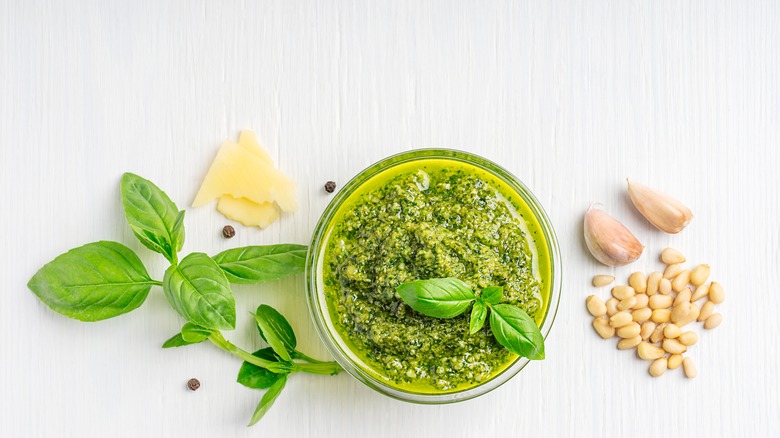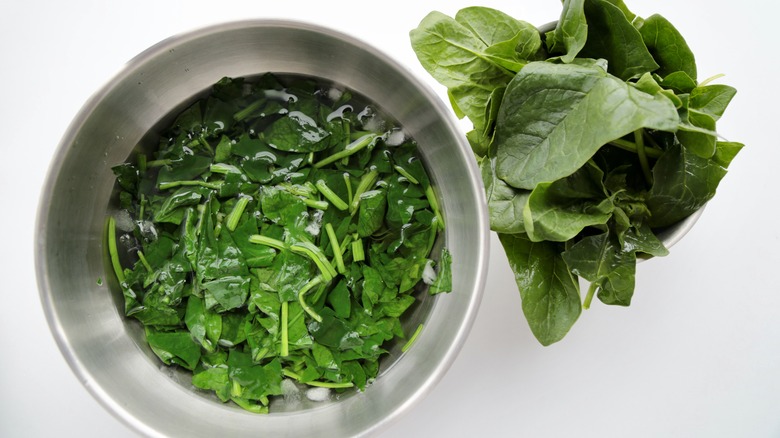The Extra Step For Vibrant Green Homemade Pesto Sauce
It's hard not to compare yourselves to others on social media, but perhaps most acutely when it comes to pesto. Why, even with the freshest of basil, does pesto seem to go a deep, less than stunning shade of green, even a few moments after blending? And why does every restaurant seem to have vibrant veridian pesto? It all comes down to a simple cooking technique called blanching.
Blanching can be done to basically any vegetable or herb, and it just requires a frying pan, boiling water, and an ice bath standing by. Bring a few inches of water to a boil, then drop the basil and give it a quick stir to ensure each piece is equally cooked. Only leave it in the pot for about 15 seconds-1 minute, then remove and immediately plunge it into the ice bath. The heat brings out the green in the basil leaf, while the ice bath immediately stops cooking, preventing wilting or darkening. You should be left with vibrant green basil leaves that still hold a bit of crunch. When you put it in the blender, because it's been blanched, the oxidization won't leach the color or flavor from the basil.
Blanching cooks and preserves
It may seem counter-intuitive to toss herbs or veggies into boiling water to make them hold up better, but blanching is a unique process that can extend the shelf life of your produce. The quick-boil and ice bath stop the naturally-occurring enzyme breakdown that results in less colorful, less flavorful produce. That means that not only does blanching help make the basil for your pesto brighter, but it can also help you preserve excess herbs and prevent food waste.
So when you buy a bushel of basil or cilantro or find yourself unable to use up that container of spinach before it starts to get slimy, blanching is an excellent way to ensure the ingredients don't rot. Even if you're already privy to saving extra produce in the freezer, blanching is an important step even before that process. Herbs can still decay and lose some color and texture while frozen, and blanching basically hits pause on spoiling. The general rule of thumb with blanching is the bigger, firmer the produce, the longer it should stay in the boiling water before the ice bath, but generally, blanching takes no more than one to five minutes.

